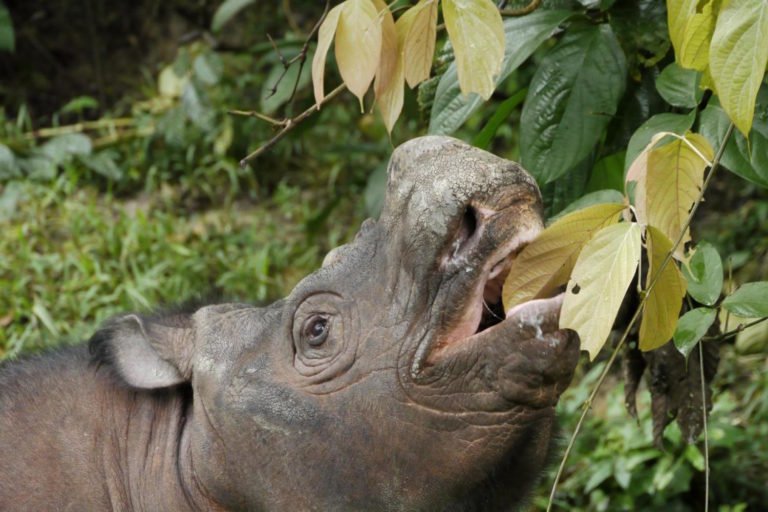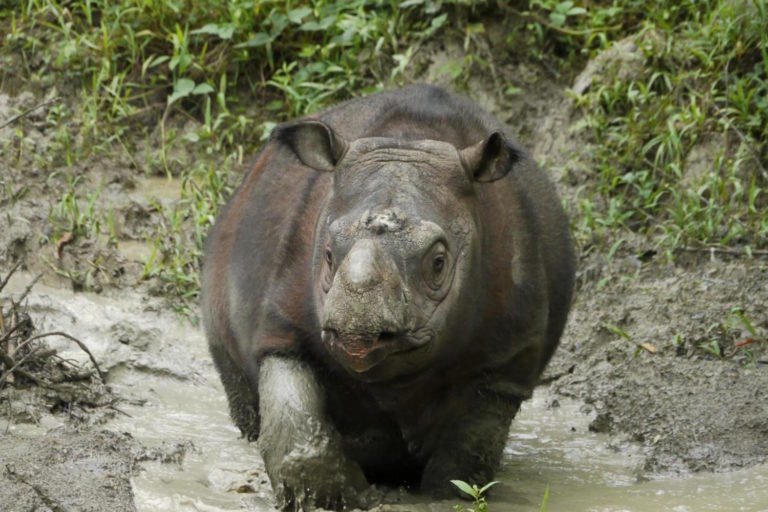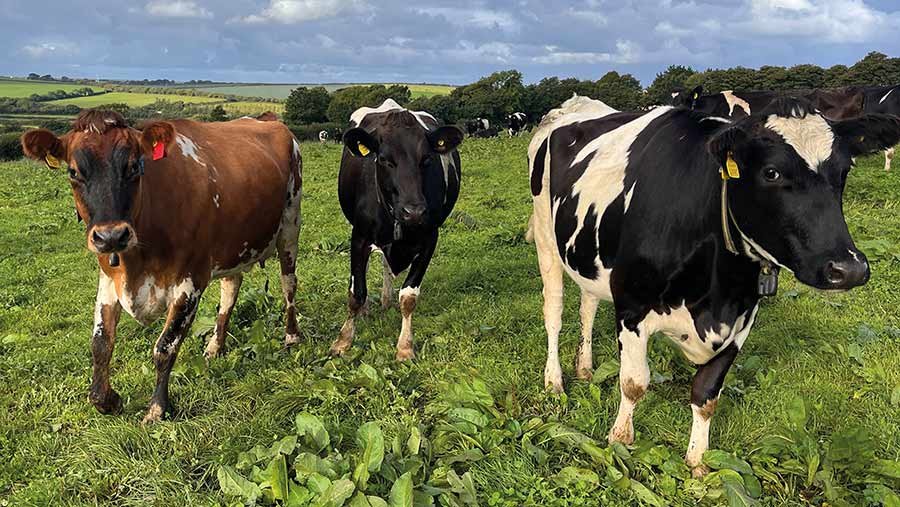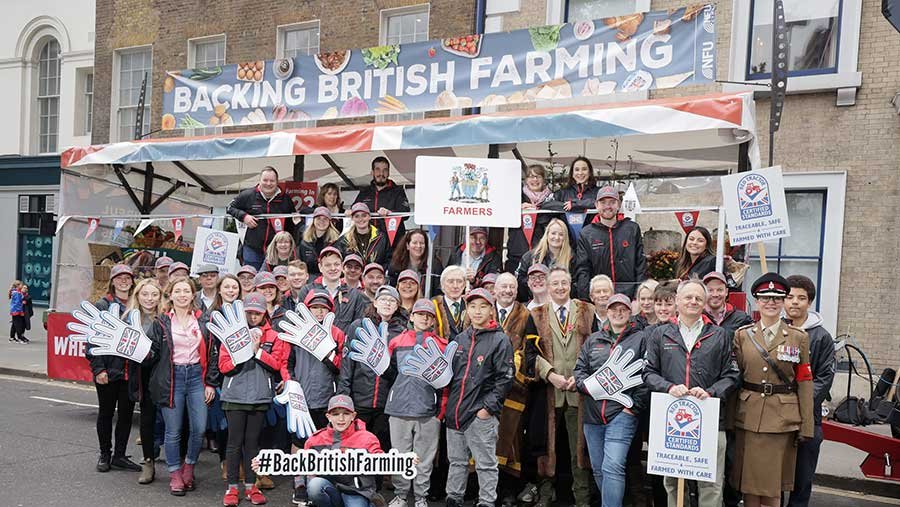- Wildlife scientists in Germany are developing a method to produce new living cells from a dead Sumatran rhinoceros in an effort to prevent the extinction of the critically endangered species.
- They have used skin samples of the last male rhino in Malaysia, known as Kertam, who died in May 2019, to grow stem cells and mini-brains as reported in the researchers’ recently published paper.
- Fewer than 80 rhinos remain in the world, and they all currently live in Indonesia in the wild, and some in a sanctuary for captive breeding.
- The captive breeding initiative of the Sumatran rhinos began in the 1980s, but over the years, the attempts have yielded both successes and failures.
A method to produce new living cells from a dead Sumatran rhinoceros is being developed by wildlife scientists in Germany in an effort to prevent the extinction of the critically endangered species.
Researchers at the German Max Delbrück Center for Molecular Medicine are developing the method to potentially produce viable spermatozoa for breeding purposes of the Sumatran rhino (Dicerorhinus sumatrensis), according to an official statement published Nov. 8. They have used the skin samples of the last male rhino in Malaysia, known as Kertam, who died in May 2019, to grow stem cells and mini-brains as reported in their recently published paper in the journal iScience.
“Even though our work is attempting to make the seemingly impossible possible — to ensure the survival of animals that would otherwise probably disappear from our planet — it must remain an exception and not become the rule,” Vera Zywitza, a scientist at the Berlin-based biomedical research institution who is the lead author of the study, said in the statement.
The Sumatran rhino used to roam many forests in the Southeast Asian region, but poaching and habitat loss have brought the species to the brink of extinction. Official estimates suggest that fewer than 80 rhinos remained in the world, and they all currently live in Indonesia in the wild, and some in a sanctuary. Their population is also threatened especially by low breeding rates in nature, as the rhinos live in very small numbers and are scattered away from each group, and in captivity, as reproduction health of the female rhinos deteriorates.
The researchers applied the same method used to turn the skin cells of northern white rhinos into stem cells. They used the skin samples, which are able to divide infinitely, and therefore never die, and the scientists could transform them into any cell type in the body. However, the scientists noted that Kertam’s cells could only be cultivated with feeder cells that released growth factors to keep stem cells in a state that allowed them to change into one of many cell types, or known as pluripotentency.
“We conserved [Kertam’s] genetic information and created an opportunity to produce viable spermatozoa for breeding purposes in the future,” Zywitza said in another press release. “As the quality of semen collected from Sumatran rhinos is poor directly after retrieval and even worse after cryopreservation and thawing, in vitro-generated spermatozoa offer a great alternative for assisted breeding of Sumatran rhinos in general.”

The captive breeding program of the Sumatran rhinos began in the 1980s, but over the years, the attempts have yielded both successes and failures. The first attempt saw 40 wild rhinos captured and brought to zoos and breeding facilities in Indonesia, Malaysia, the U.K. and the U.S. Almost all died without offspring; the first successful captive birth came in 2001, at the Cincinnati Zoo in the U.S. — so the initiative was ended.
In 2017, conservation scientists and authorities around the world decided that captive breeding was now the only viable option to save the species. The program is currently carried out at two rhino sanctuaries in Indonesia — one in Sumatra’s Way Kambas National Park and the other is in Kalimantan’s Kelian, with a third sanctuary set to be built in Sumatra’s Aceh. Earlier this year, a female calf was born at the Way Kambas Sanctuary, and she was the sixth born since intensive efforts to breed the species began in the 1980s.
“We hope the general audience gains insights into the great potential of iPSCs [induced pluripotent stem cells] and the variety of applications they can be used for,” Sebastian Diecke, head of the Pluripotent Stem Cells Platform at the Max Delbrück Center who is a co-author of the paper, said. “We also aim to raise awareness of the ongoing sixth mass extinction event, which is caused by human activities, and the great efforts that need to be taken to rescue a single species.”
Scientists in Indonesia and Germany are teaming up on advancing the science and technology for captive-breeding of critically endangered species in Indonesia, starting with the Sumatran rhino, to save them from extinction.
“Despite all the buzz around what we are doing in the lab, this can at best make a small contribution to saving these rhinos from extinction. The protection and conservation of the animals’ few remaining habitats is at least equally important,” Zywitza said.

Citation:
Zywitza, V., Frahm, S., Krueger, N., Weise, A., Goeritz, F., Hermes, R., Holtze, S., Colleoni, S., Galli, C., Drukker, M., Hildebrandt, T. B., & Diecke, S. (2022). Induced pluripotent stem cells and cerebral organoids from the critically endangered Sumatran rhinoceros. iScience. doi:10.1016/j.isci.2022.105414
Basten Gokkon is a senior staff writer for Indonesia at Mongabay. Find him on Twitter @bgokkon.
FEEDBACK: Use this form to send a message to the author of this post. If you want to post a public comment, you can do that at the bottom of the page.











